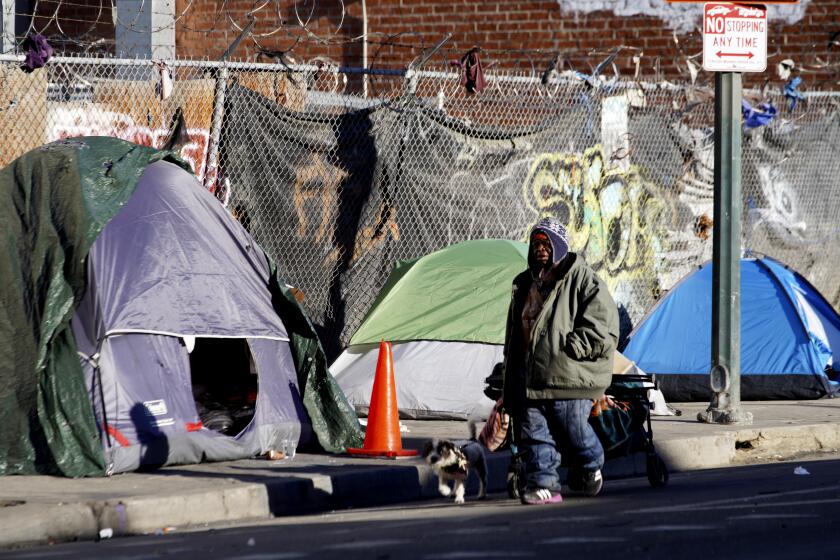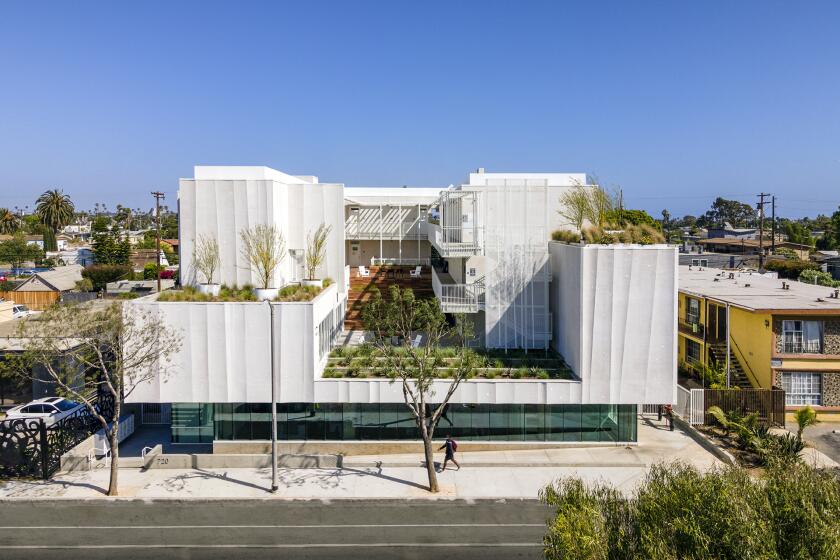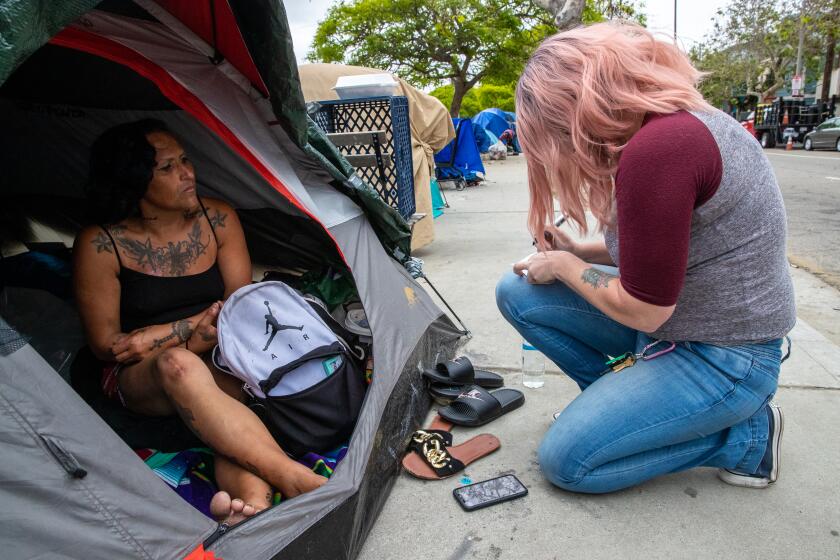Editorial: Drop in L.A.’s homeless population shows efforts to house people are paying off

- Share via
Finally, the homeless numbers in the city of Los Angeles are going in the right direction.
The results of the 2024 point-in-time homeless count released Friday show a 2.2% drop in the population of unhoused people living in the city of Los Angeles, from 46,260 in 2023 to 45,252. That’s not a huge difference, but it is noteworthy and hopeful, especially considering that the 2023 figure was up 10% from 41,980 in 2022.
For the record:
11:40 a.m. June 28, 2024An earlier version of this editorial incorrectly named the committee that L.A. City Councilmember Nithya Raman chairs. It is the Housing and Homelessness Committee.
No issue in the county and city of Los Angeles has been more fraught, costly and agonizing than trying to house and help the tens of thousands of people who find themselves living on sidewalks and in shelters. So it’s heartening to see that the strategy employed by Los Angeles Mayor Karen Bass seems to be working.
A new study gives us hints why more older people are falling into homelessness, but the solution remains the same: more affordable housing.
Her Inside Safe program focuses on moving people from encampments across the city into interim housing, mostly in the form of hotels and motels, but also tiny homes. The county has a similar interim housing program called Pathway Home and also provides services to homeless people living in interim and permanent housing.
Meanwhile, in Los Angeles County, the numbers are basically flat from the year before, down 0.27%, from 75,518 to 75,312. That’s not much, but it’s a big improvement over the 9% increase the previous year. It’s also encouraging that the number of chronically homeless people — those who have been homeless a year or more and have at least one disability, health condition or substance use issue — went down 6.8% from 31,991 to 29,823.
The fact that there is some progress after years — the numbers had continually increased since 2018 — is a result of city and county officials working together in a way that they hadn’t before, according to Va Lecia Adams Kellum, the head of the Los Angeles Homeless Services Authority. For example, both governments declared homelessness an emergency.
By excluding single-family zones from affordable housing incentive programs, L.A. leaders are squandering the potential to transform the city into one that works for people of all income levels.
LAHSA reports that the county made a record 27,300 housing placements last year. That is remarkable, but people keep falling into homelessness for the first time and are replacing those who get housing.
Adams Kellum says the homeless numbers would be worse without various city and county services, along with rent subsidies and housing vouchers that allow homeless people to find places to live. Eviction protections have kept others from losing their housing. Also about 4,000 city-financed units of permanent housing for homeless people — including units financed through the city’s Proposition HHH bond measure — became available in the past 12 months, according to city housing officials.
The most dramatic change found by the 2024 count is the shift between unsheltered and sheltered homeless populations. The number of people living on streets, in parks, riverbeds, cars or elsewhere outside dropped by 5.1% while the number of people living in temporary housing rose by 12.7%. It was even more dramatic in the city, where unsheltered homelessness dropped by 10.4% while the shelter population rose by 17.7%.
No more excuses for delaying the construction of Venice Dell homeless housing, Mayor Bass
No doubt this has a lot to do with Inside Safe. According to LAHSA, 2,754 people went through Inside Safe as of May. Slightly more than 500 of them were eventually housed permanently housed. The county’s Pathway Home had moved 629 people into interim housing as of April.
Inside Safe also appears to have shifted the demographics of homeless people somewhat. For example, the number of homeless people in South Los Angeles (including L.A., Compton and other cities) increased by 891. Adams Kellum, attributed much of that increase to the influx of homeless people in encampments from other parts of the city and county into affordable motels and hotels.
L.A. City Councilmember Nithya Raman, who chairs the council’s Housing and Homelessness Committee, says the decrease in unsheltered homeless isn’t only because of Inside Safe. She said the city added 3,000 new shelter beds since 2021 and also increased city-funded permanent supportive housing units.
All this is promising, but it is only making a dent in the problem. Not only does L.A. need more supportive housing for homeless people, it needs more affordable housing in general. A homeless person with a voucher in hand can’t use it if they can’t find an apartment. Getting homeless people into temporary housing and shelter is important. But moving people into permanent housing is what will make the homeless numbers go down significantly.
More to Read
A cure for the common opinion
Get thought-provoking perspectives with our weekly newsletter.
You may occasionally receive promotional content from the Los Angeles Times.













